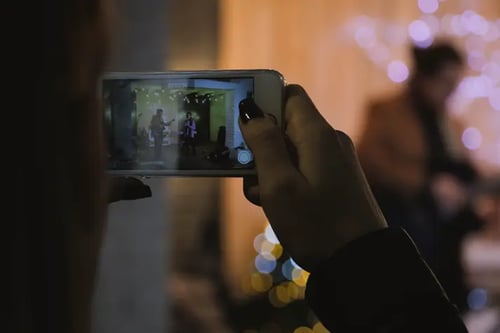-Oct-16-2025-09-09-03-1776-AM.png)
Ethnography in Market Research: Let Participants Become Co-Researchers
What is Ethnography in Market Research?
Ethnography in market research is a qualitative method that allows researchers to observe participants in their natural environments, capturing authentic behaviours, emotions, and decision-making processes. Traditionally, this meant researchers physically embedding themselves in the lives of consumers, but today, mobile ethnography has transformed the approach.
Thanks to smartphones and digital tools, participants can now act as co-researchers, documenting their own experiences in real time. Whether through video diaries, photos, or social media-style updates, this method offers a direct, unfiltered view into the consumer journey.
In fact, many people already engage in similar behaviour without realising it—sharing snapshots of their shopping trips, meals, or product choices online. Mobile ethnography simply adapts this instinctive sharing for research purposes, unlocking deeper insights into how people interact with brands, products, and services.
How Mobile Ethnography Empowers Participants
1. Blending the Roles of Researcher and Respondent
Traditional ethnographers aim to be unobtrusive, but their presence can still influence behaviour. Mobile ethnography removes this barrier by allowing participants to record their own experiences. This “self-ethnography” approach helps reduce self-consciousness and memory distortion, capturing thoughts and actions as they happen.
Even if participants don’t intentionally filter their responses, they may forget details or misremember how they felt. Mobile ethnography eliminates this gap by enabling real-time documentation.
2. Use a Variety of Tools to Capture Experiences
Mobile ethnography employs a growing list of tools, from smartphones and tablets to apps and social platforms. Participants can take photos, record videos, write reflections, or even create audio diaries. These multimedia formats allow for rich, layered insights into their experiences.
Researchers can also guide participants with surveys or polls to gather specific feedback. And because much of the data is visual or recorded, it can be revisited and analysed in depth, revealing contextual details like location, mood, and social interactions.

3. Be Aware of Potential Challenges
While empowering participants is a major strength, it also introduces unpredictability. Without a researcher present, participants may misinterpret instructions, focus on the wrong things, or contribute inconsistently. Some may forget to document key moments or drop off entirely.
However, with thoughtful planning and clear guidance, these risks can be minimised and the insights gained often far outweigh the challenges.
4. Plan Carefully for Success
Mobile ethnography is direct, flexible, and well-suited to today’s tech-savvy world. But it’s not as simple as sending participants off with a smartphone. A successful study requires careful planning.
Define your goals clearly. Design tasks that align with your objectives. Provide detailed instructions on how participants should document their experiences. And choose the right tools to support the process. With the right structure in place, mobile ethnography can deliver powerful, real-world insights.
Getting Started with Ethnography in Market Research
With a strong plan in place and your goals set, you should find that mobile ethnography in market research offers you some truly eye-opening and helpful insights for your product or service!
Download our Beginner’s Guide to Mobile Ethnography to learn how to set up your first study and start gathering real-time consumer insights.
Enjoyed this article? Here are some other resources you might like:
Ethnography - Angelfish Marketing
Five ways mobile ethnography can help research consumer behaviour
How to achieve maximum engagement in your mobile ethnography
How technology is changing market research
Four mobile ethnography lessons you won’t want to miss






-1.png?width=500&name=Untitled%20design%20(5)-1.png)

.png?width=110&height=61&name=MRS%20(2).png)


